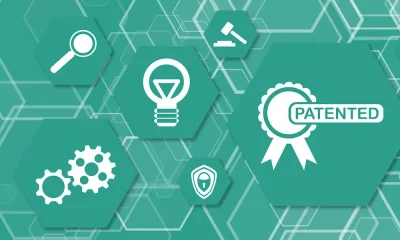Legal
Chapter 7 Bankruptcy

If you’re in over your head in debt, then you know how terrible it can be to be getting those calls all the time.
There are many ways that this can happen, and there’s certainly nothing to be ashamed of.
Maybe you lost a job when just when you got yourself deep into bills, or maybe your credit cards have been more than you can handle. Unfortunately, it happens to many people, and you should be able to get yourself out of this mess, no matter how deep in debt you are.
Luckily, if you’ve got no other options, you could file for a Chapter 7 Bankruptcy. There’s no shame in going bankrupt. In fact, it’s a smart financial move in a lot of cases. You’ve probably only heard it with a bad connotation, but don’t worry, this is a way to start over and get your life back from debt.
What it is
Filing for bankruptcy basically is the admission that you cannot pay back all your outstanding debt. There are different types of bankruptcy, such as a chapter 11 which is primarily used by businesses. This allows them to put off paying back their debts long enough to stay afloat till they get to a place where debts won’t be a problem.
The most common type in the United States is chapter 7, which is primarily used by individuals and businesses that simply cannot pay back their debts at all.
Basically, your assets get sold off, and the debts that can’t be paid with can be forgiven. It can be a long process, though, and of course, lawyers need to be involved in making sure that this is legitimate and all in fairness.
What to Do
The first thing you’re going to want to do is contacting a lawyer. Through exemptions, you’ll be able to keep your property. This is great because no one wants to go back to starting completely from scratch in every sector.
The first thing you’ll do for the process of filing is filling out a form that lists all your financial assets. Once you file, then everyone you’re in debt to will be less able to implement collections on you, giving you much more peace of mind.
The process can belong. It can take up to 6 months until your discharge occurs, which means a lot of waiting, but there could also be bumps that make it take longer.
You’re going to have to meet with the creditors and make claims for how you’re unable to pay, but 60 days after that meeting, which called a 341 meeting, they can challenge your claims, making the process take longer to figure out those challenges.
How it Could be Good for a Business
This doesn’t have to just be for individuals, though. Businesses can file and often find some financial security from this in the end. Filing for a chapter 7 as a business means you’re getting a second chance, and it may be a hit to the credibility, but if it’s what you need, it’s worth looking at with an attorney.
What to Do After
Once you’re discharged, life is going to be a bit less stressful. You don’t have to look around every corner to make sure no one will ask you for money. Now you’re forgiven.
But, your credit has probably sustained a huge blow from this, so you’ll need to learn how to live after bankruptcy.
Since this is a new start, you’re going to want to get on your financial game. Which means using more of your money as you have it. For example, chapter 7 will be on your credit report for 10 years, but as opposed to chapter 13, you get to keep all of your salaries because you’re walking away from your debt completely.
So, you’ll want to live more on cash and paying for your lifestyle upfront every time. This may be hard to get used to, but you definitely won’t be racking up any more debt if you can achieve this.
You’ll want to try and re-establish your credit, though. You can get a secured card, which means that you’re not going to be racking anything up because you put forth the money on it. This is a good way to start rebuilding, which you’ll want to do if you plan to buy a house.









